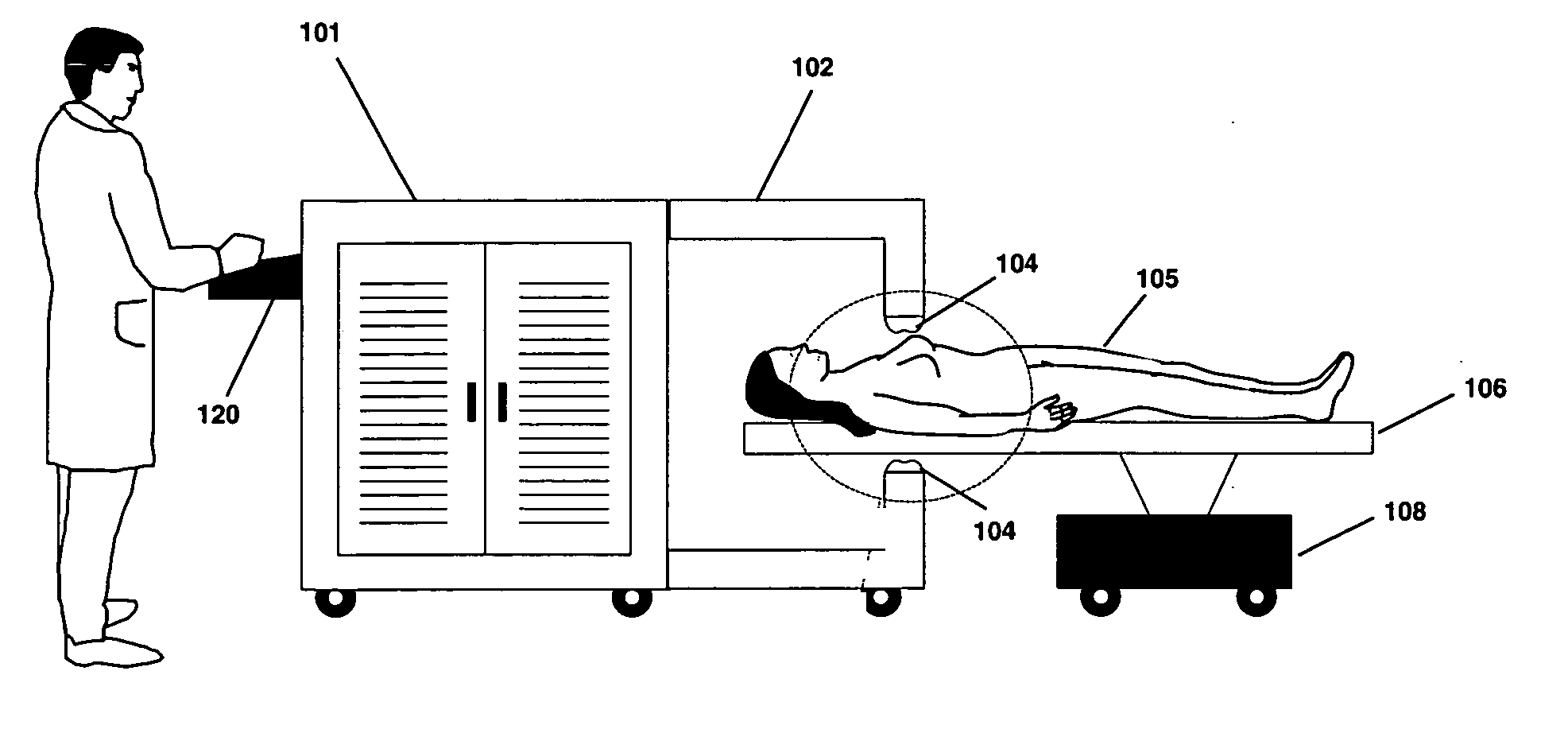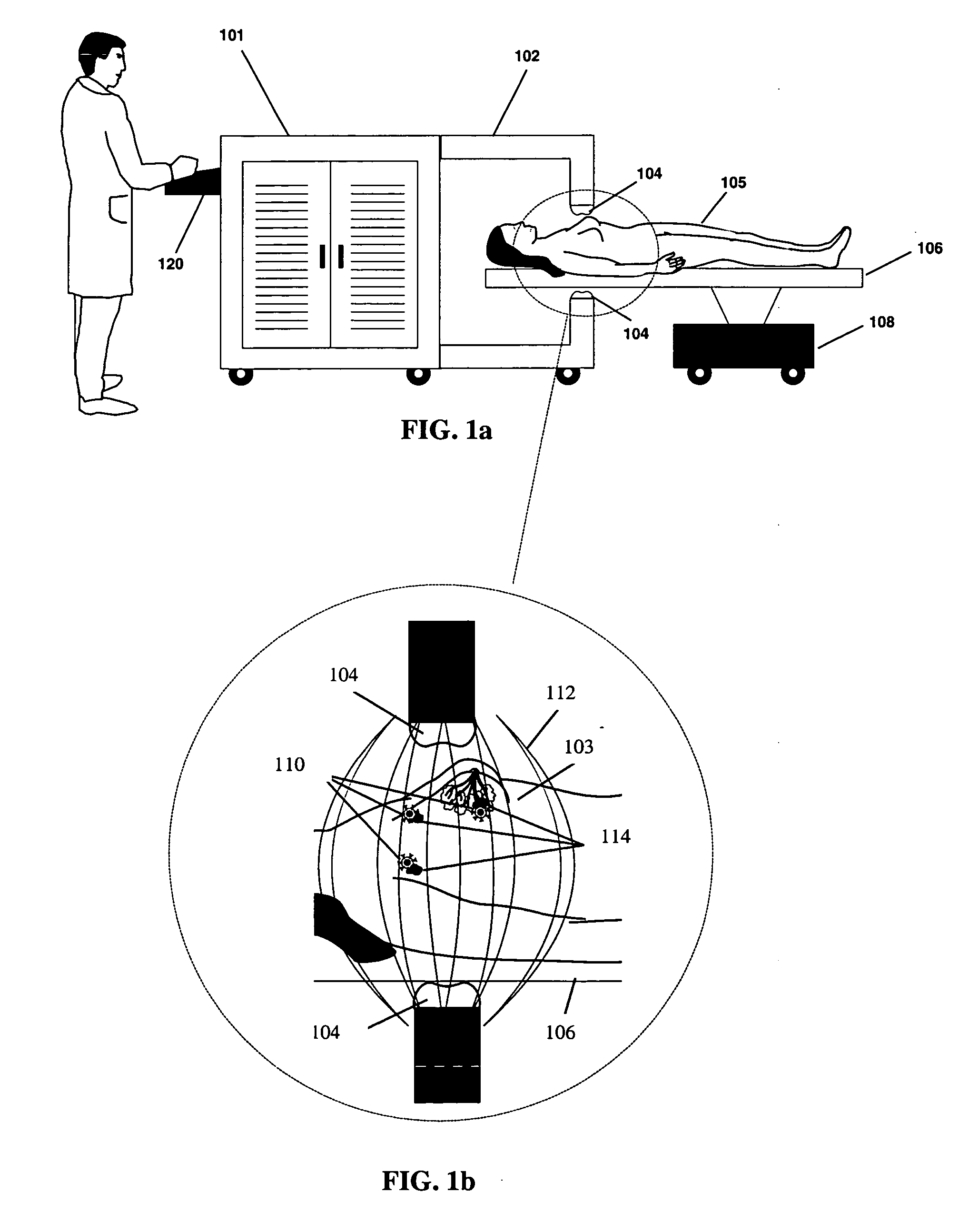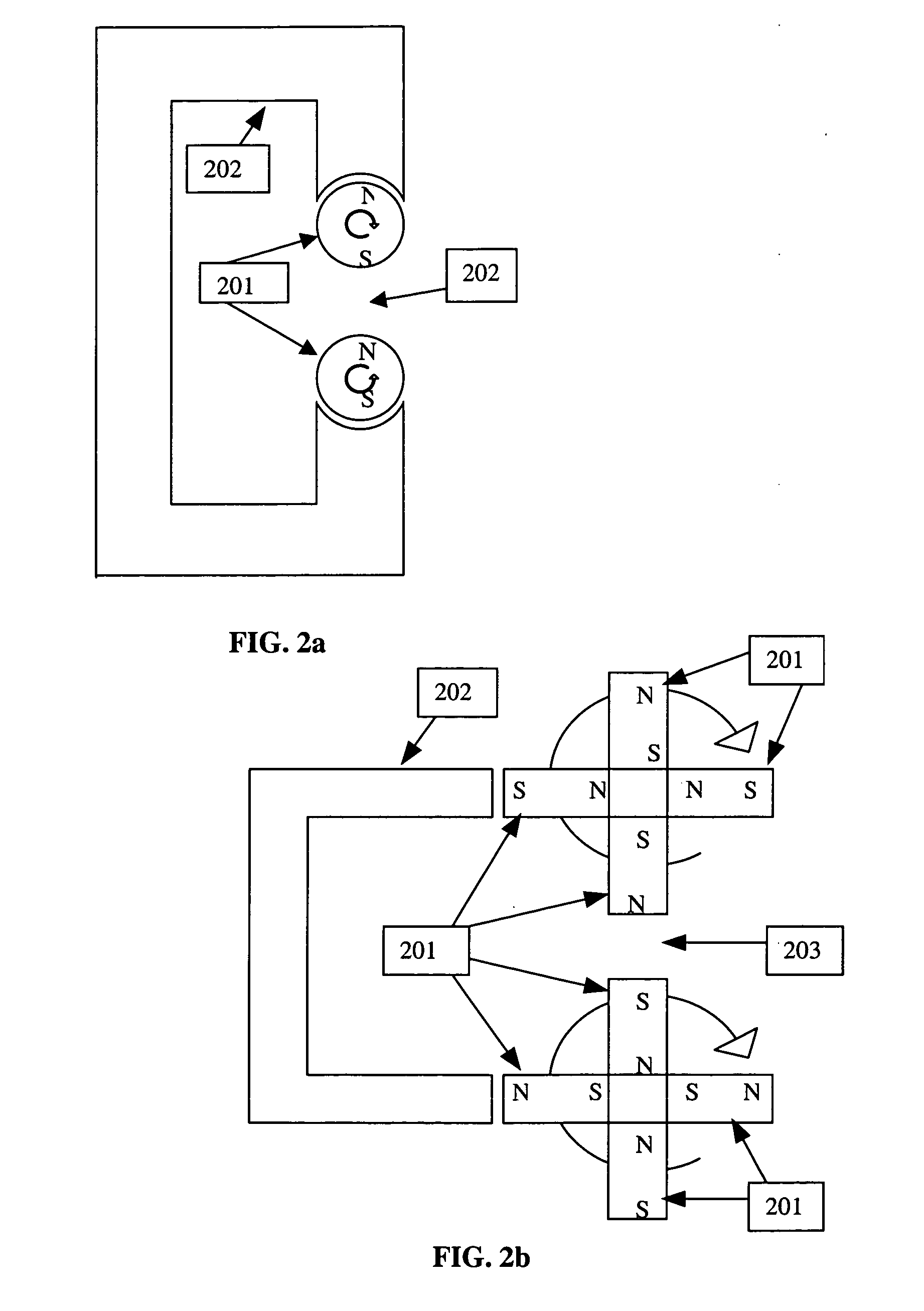Devices for targeted delivery of thermotherapy, and methods related thereto
- Summary
- Abstract
- Description
- Claims
- Application Information
AI Technical Summary
Benefits of technology
Problems solved by technology
Method used
Image
Examples
example 1
Pulsed Operation for Increased Bioprobe Heat Output
[0081] In general, a fundamental frequency of several MHz is effective for inductive heating. At such frequencies, however, tissue heating may be problematic. Because eddy current heating of the tissue is approximately proportional to the square of the frequency and hysteretic heating of the particles is approximately proportional to frequency to the first power, lower frequency tends to favor hysteretic heating. More precisely, reducing the frequency yields a greater reduction in tissue heating than in bioprobe heating for a specific AMF amplitude.
[0082] Eddy current heating of tissue is also proportional to the square of the AMF amplitude. Hysteretic heating of the bioprobes has a more complex relationship with AMF amplitude. A typical relationship between AMF amplitude and hysteretic heat output is described in FIG. 8. Tissue heating places limitations on the practical amplitude of the magnetic field. A preferred range may be f...
example 2
Efficacy of Bioprobes: In Vitro Trials with MCF-7 Breast Cancer Cells
[0083] The bioprobes used in this example included 50-nm, Fe3O4 particles surrounded by a dextran shell, to which the monoclonal antibody (mAB) for Her-2 was covalently linked. The particles were suspended in cellular growth media including Modified Eagle's Medium (MEM) containing 10% fetal calf serum, insulin (10 μg / ml), fungizone, glutamine, penicillin, streptomycin, sodium pyruvate and non-essential amino acids, which was then added to cultures of MCF-7 cells. The MCF-7 cells represent an estrogen receptor-positive human breast carcinoma, and were grown on tissue culture inserts with a 10 mm diameter possessing porous frits with pore sizes of 0.02 or 0.2 μm.
[0084] The alternating magnetic field source was an industrial 3.5 kW variable duty radio-frequency generator with a frequency of 740 kHz and time-averaged field amplitude of 500 Oe (peak field amplitude, 1300 Oe). The generator produced pulses with a lengt...
example 3
Temperature Monitoring During Treatment
[0087] In a treatment cycle, the bioprobes 110 may be exposed to and become attached to metastatic cells in the treatment area. Pole pieces 304 may be chosen to provide treatment in a selected treatment area, for example, approximately 6 inches in diameter. The patient 105 is typically placed on the treatment bed 106, and the bed controller 108 is typically adjusted to place the targeted tissue at the region of maximum field strength between the poles 304. The pulse width, duty cycle, and peak amplitude of the AMF and the treatment time may be adjusted. Several temperature probes, for example, four temperature probes, may be inserted into the treatment volume. One probe may be located centrally and the other three may be inserted into tissues, within the treatment area that are heated by the AMF. As the tissue heats under the applied AMF, the temperature probes 354 send data to the probe monitor 352. The monitor sends the temperature data via ...
PUM
 Login to View More
Login to View More Abstract
Description
Claims
Application Information
 Login to View More
Login to View More - R&D
- Intellectual Property
- Life Sciences
- Materials
- Tech Scout
- Unparalleled Data Quality
- Higher Quality Content
- 60% Fewer Hallucinations
Browse by: Latest US Patents, China's latest patents, Technical Efficacy Thesaurus, Application Domain, Technology Topic, Popular Technical Reports.
© 2025 PatSnap. All rights reserved.Legal|Privacy policy|Modern Slavery Act Transparency Statement|Sitemap|About US| Contact US: help@patsnap.com



